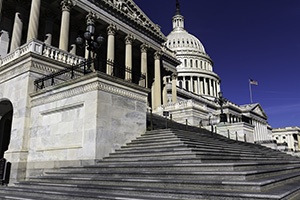 The Fed stepped up early and hard for the coronavirus crisis. It cut interest rates essentially to zero. It eased restrictions on banks to enable faster and more business lending. Plus, the Fed has taken unlimited measures to support the financial system as a whole, restarting programs from the last crisis to purchase bonds and inject money into the system. Unlike 2008, the Fed has been consistently ahead of the crisis, determined to choke any instability as quickly as possible before the medical crisis transmutes into a financial one. It largely looks like the Fed has been successful. The Fed and monetary policy have done what they can do so far, and they are poised to do more as needed.
The Fed stepped up early and hard for the coronavirus crisis. It cut interest rates essentially to zero. It eased restrictions on banks to enable faster and more business lending. Plus, the Fed has taken unlimited measures to support the financial system as a whole, restarting programs from the last crisis to purchase bonds and inject money into the system. Unlike 2008, the Fed has been consistently ahead of the crisis, determined to choke any instability as quickly as possible before the medical crisis transmutes into a financial one. It largely looks like the Fed has been successful. The Fed and monetary policy have done what they can do so far, and they are poised to do more as needed.
What’s missing?
Monetary policy—think interest rates and bank regulation—can only do so much, however. What has been missing, until now, has been direct policy support (i.e., writing checks) for workers and businesses. Spending money, known as fiscal policy, is the province of Congress. Last night, the two parties appear to have agreed on a stimulus deal aimed at providing financial support—checks—directly to workers and businesses. This deal is the missing piece in the needed policy support for the economy, and it should significantly mitigate the damage.
The package totals about $2 trillion, or almost 10 percent of the economy as a whole. It also includes provisions to enable the Fed and commercial banks to add up to another $6 trillion in temporary financing. This is real money, larger than what was done in 2008. Although it took longer, Congress has now gone big and hard to get ahead of the damage. And, like the Fed, there is likely more there if needed.
Where will the money go?
Nearly half of the package is direct payments to both people and firms. Individuals will get a $1,200 check, with an additional $500 per child, up to an income limit. Loan guarantees are available to small businesses, which convert to grants if the businesses maintain their payrolls. Unemployment insurance is now for 100 percent of lost wages for up to four months. There is also money to support the health care system, as well as state and local governments. Finally, a significant part will go to large businesses affected by the crisis, such as airlines.
In other words, there is something for pretty much everyone here. While there will undoubtedly be mistakes, it provides the framework for getting the economy through the crisis until something like normality returns. This program is what is needed to mitigate the long-term damage from the crisis.
Will we survive the slowdown?
What this package, and the Fed’s actions, will not do is prevent a significant short-term drop in the economy. The second quarter will be terrible, and the third quarter won’t be great either. With the lockdowns in place, with people unable to work or spend, preventing that decline is impossible.
What can be done—and what the package is designed to do—is allow people and companies to survive during that period, despite that slowdown. People will be able to pay their rent and buy food, first with the initial check and then with the expanded unemployment insurance. Companies will be able to pay their rent, other expenses, and, in many cases, their people. Critically, with that support, both individuals and companies will be around to start working and spending again when the lockdown eases and when the economy starts up again—which is the goal.
There will certainly be collateral damage here. People will suffer, and some companies won’t make it through. But this program will help minimize that damage and help ensure that we have a functioning economy in a couple of months when the virus is brought under control.
Between the Fed and the proposed congressional action, we will have the policy response in place that we need to get through the next difficult weeks. There will still be damage, and there will likely be a need for additional policy response. If that’s the case, the signs are that both the Fed and the government will do what is needed, when it is needed.
What’s the message?
There are two messages from the stimulus package. The first is that the money will be there, which is critical. It will support confidence from consumers and businesses, and it will help preserve both the capability and the confidence needed to keep the economy going.
The second, and in some ways more important, is that the U.S. government is up to the challenge of this crisis. That position will also help preserve confidence, which will help more than anything to resolve this crisis as quickly as possible.


 Print
Print

